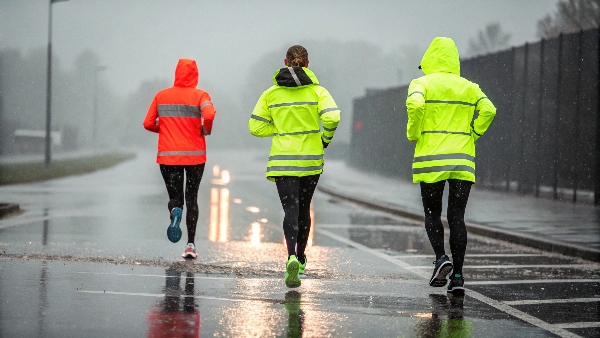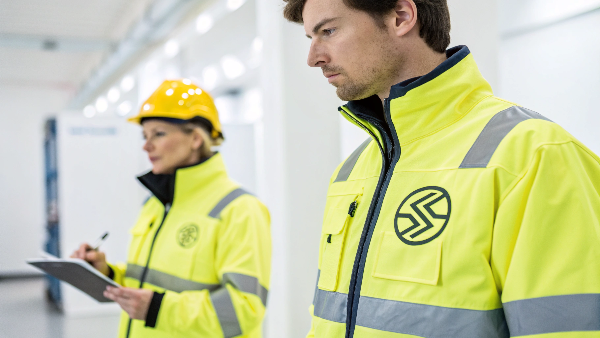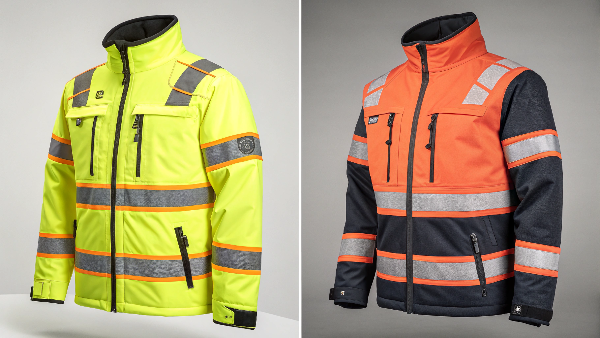Choosing safety vests involves cost, but worker safety is priceless. You want protection without overspending. Finding that balance can be tricky.
The cost of a safety vest varies greatly, from a few dollars for basic models to over \$50 for specialized ones with extra features, depending on materials, certifications, and quantity.
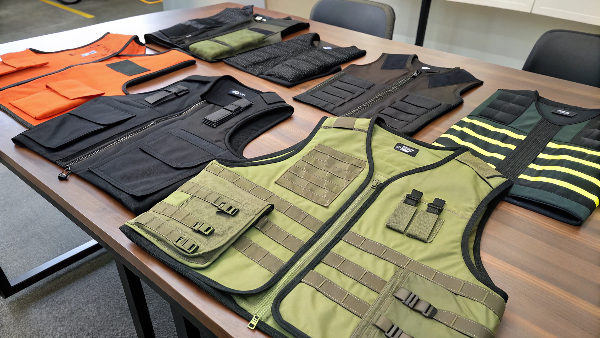
Understanding vest costs helps you budget effectively for your team's safety. We know you want the best value. So, let's explore what goes into the price and how to choose wisely. We'll cover different aspects of safety vests to help you make an informed decision for your business needs.
Which brand is best for vests?
Picking a vest brand feels overwhelming. So many choices, how do you know who to trust? You need reliability and quality, not just a name.
The "best" brand for safety vests is one that consistently delivers certified quality, offers customization1 to meet your specific needs, and provides reliable service, like us at Vissafety.

Choosing the right brand is crucial for ensuring your workers' safety and your company's compliance. As a manufacturer, we've seen firsthand what differentiates a good supplier. For over a decade, we've worked closely with clients like Danny Cheng, a PPE importer in California. Danny needs products that meet strict ANSI/ISEA 107 standards2 and appeal to North American workers. He values our industry-leading R&D, triple inspection quality assurance, and our ability to co-develop unique products, like the lightweight, breathable safety jackets we launched together in 2020. The best brand for you will understand your market, offer robust support, and act as a partner in your success. At Vissafety, our mission is to provide top-quality, stylish, and customizable High Visibility Clothing3 to empower our clients’ businesses globally. We believe this partnership approach, backed by solid manufacturing capabilities, makes a real difference.
| Feature | Why It Matters for a "Best" Brand | How Vissafety Delivers |
|---|---|---|
| Certifications | Ensures compliance and safety | EN ISO 20471, ANSI/ISEA 107, ISO, OEKO-TEX |
| Quality Control | Minimizes defects, ensures reliability | Triple inspections (pre, in-process, final) |
| Customization | Meets specific needs, branding | Reflective tapes, logos, colors, sizes |
| R&D Strength | Innovation, problem-solving | 75+ testing devices, new materials |
| Reliability | Consistent supply, meets deadlines | 10 million units annual capacity, stable logistics |
| Client Support | Smooth collaboration, issue resolution | 24/7 multilingual support, <24hr reply |
Can you rent a safety vest?
Sometimes you need vests for a short project. Buying them might seem wasteful. Renting could be an option, but is it practical for safety gear?
While renting safety vests4 is possible for very short-term needs or events, most businesses, especially B2B clients needing bulk, find purchasing more cost-effective and reliable for quality and compliance.
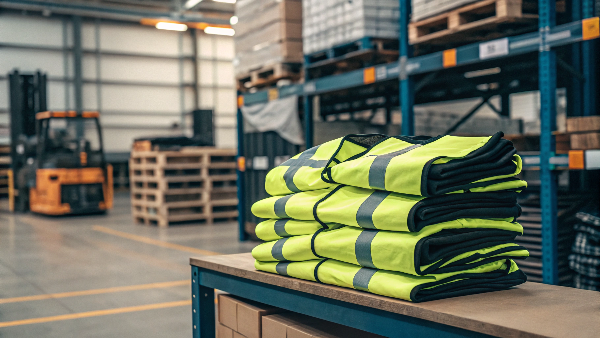
For our B2B clients like Danny, who supply large corporate buyers in construction and logistics, purchasing is standard. Renting safety vests can be an option for specific, usually smaller-scale or very temporary situations, like for event staff or a one-off short project. However, when you're dealing with ongoing safety requirements for a workforce, buying offers significant advantages. You have control over the quality, ensure consistent compliance with standards like ANSI/ISEA 107, and can customize vests with company branding. For Danny, ensuring every vest meets the high standards his clients expect is non-negotiable, something harder to guarantee with rentals. Plus, the cost per use often becomes much lower with purchasing when vests are needed regularly. At Vissafety, we focus on B2B and wholesale, meaning we are geared towards bulk orders where purchasing provides the best value and control for our clients.
| Aspect | Renting Safety Vests | Purchasing Safety Vests (from Vissafety) |
|---|---|---|
| Cost | Lower upfront for short term | More cost-effective long-term/bulk |
| Customization | Limited or none | Fully customizable (logos, colors, etc.) |
| Compliance | Variable, depends on rental stock | Guaranteed to specified standards |
| Availability | May be limited for specific types | Ensured supply for planned needs |
| Condition | Used, potential wear and tear | New, pristine condition |
| Best For | Very short-term, one-off events | Ongoing operational needs, branding |
How much material does it take to make a vest?
Ever wonder about the materials in a vest? The amount can affect cost and comfort. Knowing this helps you understand product value better.
The amount of material needed for a safety vest5 depends on its size, design complexity (e.g., pockets, closures), and the required coverage of fluorescent and reflective materials.
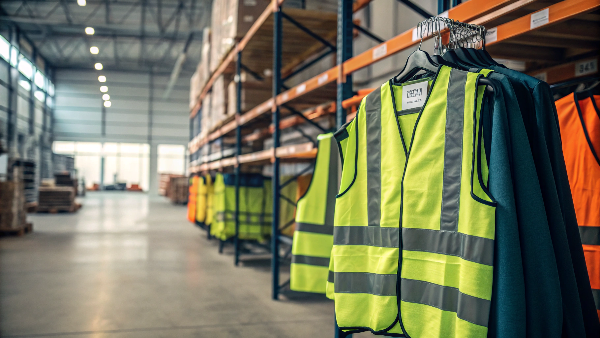
Calculating the exact material for a single vest involves several factors. A simple Class 2 safety vest will use less fabric and reflective tape than a more complex Class 3 surveyor's vest with multiple pockets and wider reflective stripping. For instance, a standard large-sized vest might use around 0.7 to 1.0 square meter of base fabric and several meters of reflective tape. At Vissafety, our production lines are optimized for efficiency. We use precise cutting techniques to minimize waste, which is part of our commitment to sustainability and cost-effectiveness – something our clients like Danny Cheng appreciate. When we co-developed detachable-reflective-strip work pants with Danny in 2023, material optimization was key to enhancing functionality while managing costs. The choice of material also matters; lightweight, breathable fabrics might have different yields than heavy-duty ones. We ensure all our materials meet global standards, balancing durability, visibility, and wearer comfort.
| Vest Component | Factors Affecting Amount Used | Approximate Range (Standard Adult Vest) | Vissafety Focus |
|---|---|---|---|
| Base Fabric | Size (S-5XL+), style (e.g., mesh, solid) | 0.7 - 1.2 sqm | Quality, durability, compliance, eco-options |
| Reflective Tape | Class (1, 2, 3), design, tape width | 2 - 6 meters | High-reflectivity, durability, EN/ANSI compliance |
| Binding/Edging | Vest perimeter, pocket edges | 2 - 4 meters | Strong, matches vest color/style |
| Fasteners | Type (zipper, Velcro), number of pockets | 1 zipper or multiple Velcro strips | Durable, easy to use |
| Pockets (if any) | Number, size, and style of pockets | Additional fabric per pocket | Functional design, reinforced stitching |
What are the rules for wearing a vest?
Are there specific rules for wearing safety vests? Not knowing them can be risky. You want your team safe and compliant, avoiding any trouble.
Yes, specific rules for wearing high-visibility safety vests6 depend on the job site, industry regulations (like OSHA in the US), and risk assessment, often mandating specific standards like EN ISO 20471 or ANSI/ISEA 107.
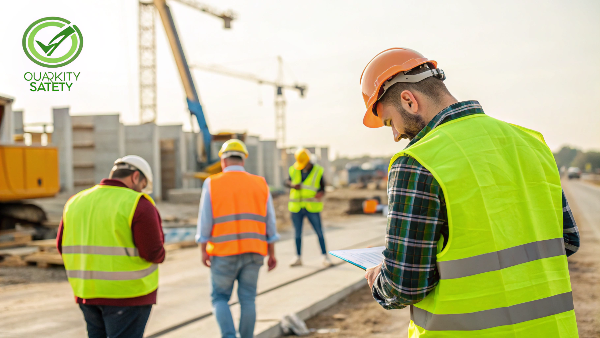
The rules for wearing a high-visibility safety vest are critical and vary by region and worksite. In the United States, OSHA (Occupational Safety and Health Administration) mandates high-visibility apparel for workers exposed to vehicular traffic or moving construction equipment. The key standard here is ANSI/ISEA 1077. Similarly, in Europe, EN ISO 204718 is the benchmark. These standards classify vests into different types or classes (e.g., Class 1, 2, or 3) based on the minimum area of fluorescent background material and retroreflective tape, and their placement on the garment. For example, Class 3 garments offer the highest level of visibility and are required for workers in high-speed traffic environments or poor weather conditions. As a manufacturer, Vissafety ensures all our products meet these global standards. Our client, Danny Cheng, relies on us to provide fully compliant vests for his North American clients in construction and logistics, where adherence to ANSI/ISEA 107 is paramount to avoid penalties and, more importantly, to ensure worker safety. It's crucial for employers to conduct a risk assessment to determine the appropriate class of vest for their specific work environment.
| Standard | Region | Key Focus | Common Classes & Examples |
|---|---|---|---|
| ANSI/ISEA 107 | North America | Specifies performance for high-visibility safety apparel (HVSA). | Type O (Off-Road, Class 1), Type R (Roadway, Class 2 & 3), Type P (Public Safety, Class 2 & 3). |
| Defines minimum amounts of background & retroreflective material. | Class 2: Workers near traffic < 50 mph. Class 3: Workers near traffic > 50 mph, complex backgrounds, poor visibility. | ||
| EN ISO 20471 | Europe | International standard for high-visibility clothing. | Class 1: Lowest visibility. Class 2: Intermediate visibility. Class 3: Highest visibility. |
| Considers conspicuity in daylight, twilight, and under vehicle headlights. | Determined by minimum areas of fluorescent and retroreflective material. | ||
| General Rules | Universal | Must be worn correctly, kept clean, and replaced when faded or damaged. | Vest must be appropriate for the risk level. Bright conditions for fluorescent, dark for reflective. |
How long should a vest be?
Does vest length really matter? An ill-fitting vest can be unsafe or uncomfortable. You need the right length for proper coverage and movement.
A safety vest should be long enough to provide adequate torso coverage for visibility as per standards, but not so long that it hinders movement, gets caught on machinery, or covers essential tool belts.
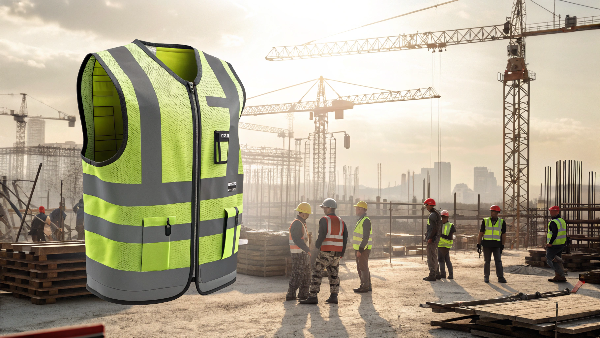
The ideal length of a safety vest is a balance between providing sufficient visible area and ensuring worker comfort and safety. Standards like ANSI/ISEA 107 and EN ISO 20471 don't specify exact lengths in inches or centimeters, but they do mandate minimum surface areas for both the fluorescent background material and the retroreflective tape. This inherently influences how long and wide a vest needs to be to meet these requirements for a given size. Typically, a vest should cover the majority of the torso, extending from the shoulders down to near the waistline or slightly below, depending on the design and class. It shouldn't be so short that it compromises the required visible area, nor so long that it interferes with sitting, bending, or accessing tools on a belt. For our clients like Danny, who cater to North American worker preferences, we often discuss sizing that allows for layering over other clothing, especially in colder climates, while maintaining correct coverage. Our customization options include adjusting lengths within compliant parameters to suit specific job roles or body types.
| Vest Length Consideration | Importance | Typical Guideline | Vissafety Approach |
|---|---|---|---|
| Visibility Standards | Meets required fluorescent and reflective material area. | Must cover enough torso area to meet ANSI/EN class requirements. | Designs ensure full compliance for each size and class. |
| Worker Mobility | Should not restrict bending, reaching, or other movements. | Should end around the waist or slightly below, not impede leg movement. | Ergonomic designs, options for different styles. |
| Snag Hazard | Excessively long vests can get caught in machinery or objects. | Fit should be trim enough to avoid snagging. | Adjustable features, proper sizing guidance. |
| Tool Belt Access | Should not cover or interfere with access to tools on a belt. | Length should allow clear access to belts worn at the waist. | Consideration in design and custom sizing. |
| Coverage over Clothing | Needs to fit over seasonal workwear while maintaining visibility. | Allow for layering without becoming too short or tight. | Wide size range and custom options available. |
Should a vest be tight or loose?
How should a safety vest fit? Too tight is restrictive, too loose is a hazard. Getting the fit right is key for safety and comfort.
A safety vest should fit comfortably over your regular work clothing, allowing full range of motion, but not be so loose that it can snag on equipment or obscure reflective materials.
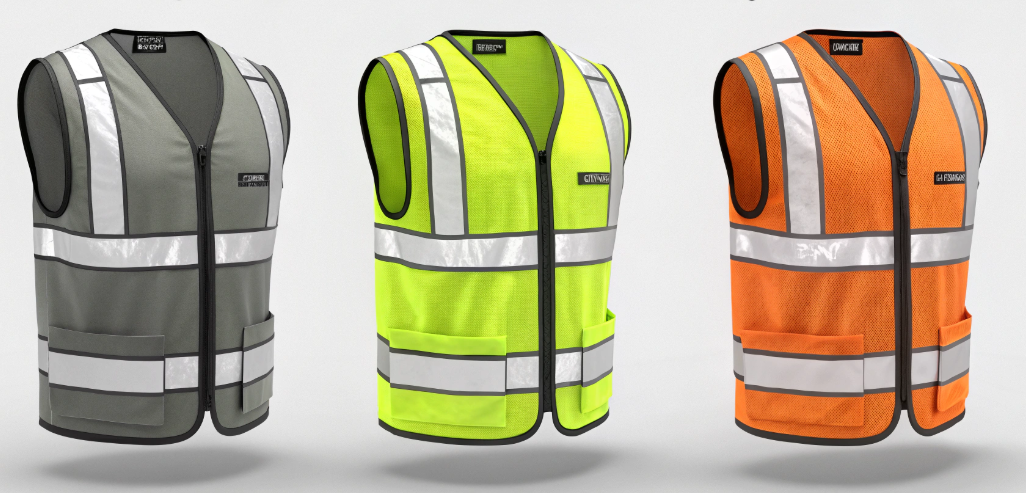
Finding the perfect fit for a safety vest is crucial. If it's too tight, it can restrict movement, make breathing uncomfortable, and might not fit properly over seasonal workwear. If it's too loose, it poses a significant snag hazard, especially around moving machinery, and can also shift around, potentially covering the reflective tapes or feeling cumbersome. We always advise our clients, including Danny Cheng, that a "just right" fit is the goal. This means the vest should allow for a full range of motion – bending, stretching, reaching – without pulling or binding. Many of our vests at Vissafety come with adjustable features like Velcro or elasticated sides to help achieve this optimal fit for different body types and layers of clothing. Danny often emphasizes the preference for "loose cuts" for North American workers, which means comfortable but not baggy. This ensures the vest performs its safety function effectively while keeping the worker comfortable throughout their shift.
| Fit Aspect | Too Tight Risks | Too Loose Risks | Ideal Fit Guideline | Vissafety Solution |
|---|---|---|---|---|
| Movement | Restricts motion, uncomfortable | Can shift, feel cumbersome | Allows full range of motion without binding | Ergonomic design, appropriate sizing |
| Safety | May not cover properly if strained | Snag hazard, can cover reflective parts | Secure fit, no loose flapping material | Adjustable closures (Velcro, zippers, elastic) |
| Comfort | Can cause chafing, restrict breathing | Can feel bulky, get in the way | Comfortable over work clothes, allows air circulation | Breathable materials, thoughtful design |
| Layering | May not fit over winter clothing | May be excessively large over summer wear | Accommodates layers without being too tight or loose | Generous sizing options, adjustability |
| Appearance | Can look unprofessional if ill-fitting | Can look sloppy or unprofessional | Neat, professional appearance that ensures safety compliance | Custom sizing, consistent manufacturing |
How heavy should a vest be?
Does a heavy vest make you tired? The weight of a safety vest matters for comfort. You need protection without feeling weighed down all day.
A safety vest should be as lightweight as possible while still meeting durability and visibility standards, as heavy vests can cause fatigue and discomfort during prolonged wear.

The weight of a safety vest is a significant factor in worker comfort, especially for those who wear them for extended periods. A heavy vest can lead to fatigue, strain, and reduced productivity. At Vissafety, we focus on using advanced, lightweight materials that don't compromise on durability or the high-visibility requirements of standards like ANSI/ISEA 107 and EN ISO 20471. For example, polyester mesh fabrics are popular because they are both lightweight and breathable, ideal for warmer climates or strenuous jobs. When we co-launched lightweight, breathable safety jackets with Danny Cheng in 2020, the primary goal was to address the needs of workers in high-temperature environments without sacrificing safety. Our R&D team continuously explores new fabric technologies and construction methods to reduce weight while enhancing performance. Even vests with multiple pockets or additional features are designed to distribute weight evenly and minimize bulk. The goal is for the worker to barely notice they're wearing it, allowing them to focus on their tasks safely and comfortably.
| Material / Feature | Impact on Weight | Vissafety's Approach to Lightweight Design | Benefit to User (e.g., Danny's Clients) |
|---|---|---|---|
| Base Fabric | Polyester mesh is lighter than solid polyester. | Offer various fabric options, including lightweight meshes. | Enhanced comfort, reduced heat stress. |
| Reflective Material | Glass bead tapes are generally lighter than prismatic. | Use high-quality, efficient reflective materials to minimize bulk and weight. | Maintains high visibility without excess weight. |
| Pockets & Zippers | More features can add weight. | Strategic design to balance functionality and weight; lightweight components. | Practical features without undue burden. |
| Overall Design | Construction methods can influence final weight. | Optimized patterns and construction to reduce unnecessary material. | Improved ergonomics and reduced fatigue. |
| Specialized Vests | E.g., surveyor vests with many pockets. | Careful material selection and design to keep even complex vests manageable. | Functionality meets comfort. |
Conclusion
Choosing the right safety vest involves many details, from cost to fit. Ultimately, it's about ensuring worker safety, compliance, and comfort effectively.
-
Discover why customization is crucial for safety vests to meet specific needs and branding requirements. ↩
-
Learn about ANSI/ISEA 107 standards to ensure your safety vests meet essential safety requirements. ↩
-
Explore this link to understand how High Visibility Clothing enhances safety and compliance in various work environments. ↩
-
Explore this link to understand the pros and cons of renting safety vests, helping you make informed decisions for your projects. ↩
-
Learn about the materials used in safety vests and how they impact cost and comfort, enhancing your understanding of product value. ↩
-
Understanding regulations ensures compliance and safety for workers in hazardous environments. Explore this link for detailed guidelines. ↩
-
This standard is crucial for ensuring worker safety in North America. Learn more about its requirements and classifications. ↩
-
This international standard is vital for safety in Europe. Discover its specifications and how they apply to your work environment. ↩

